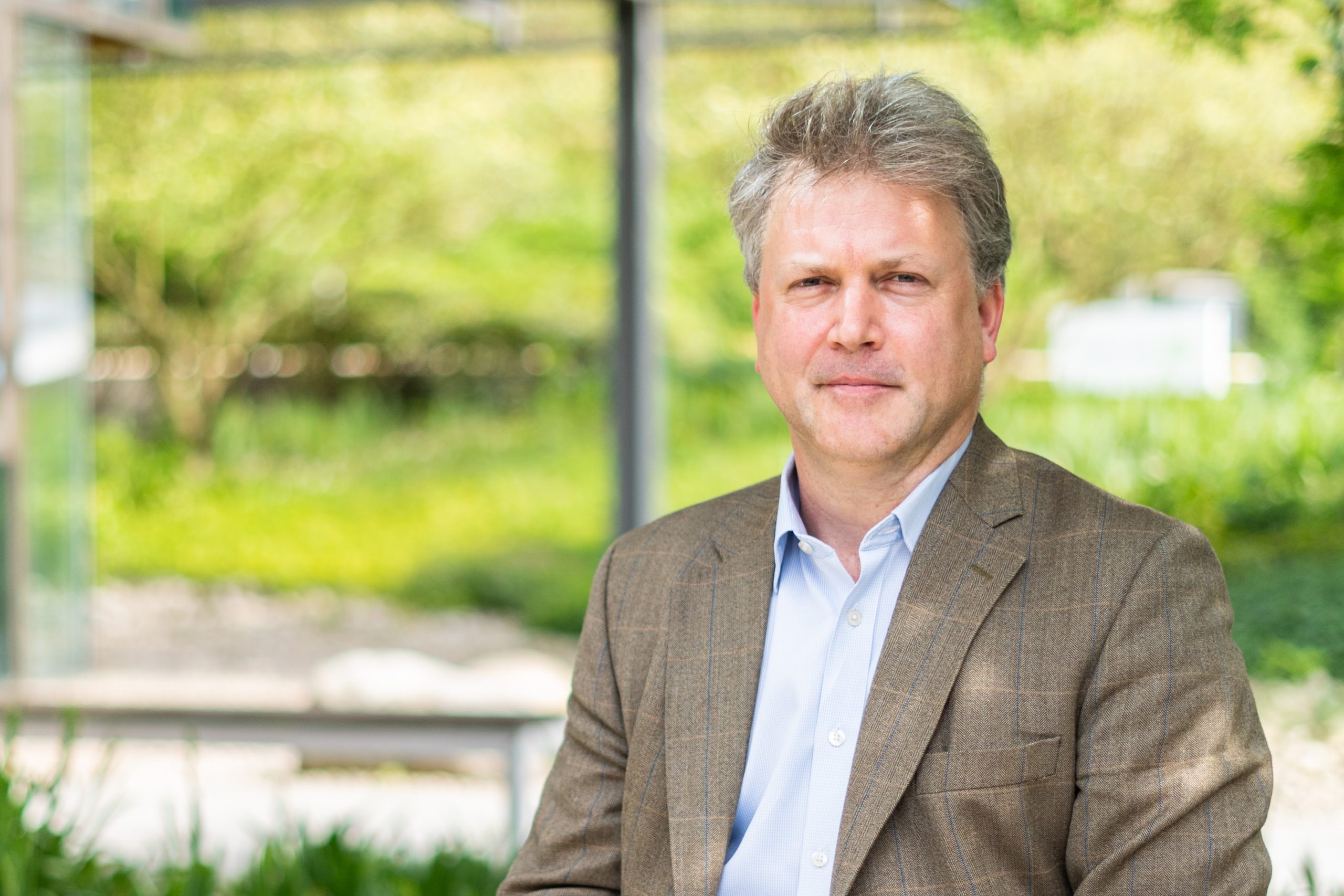
Human genome editing: regulations, risks, and ethical considerations
Scientists have the technology to edit the human genome. But when should they, and who contributes to these decisions?

By Ewan Birney, EMBL Deputy Director General and EMBL-EBI Director
Human genome editing offers great opportunities for global health and society. Genome editing radically changed around 2010 with the introduction of a new technology we now know as CRISPR. Emmanuel Charpentier and Jennifer Doudna were rightfully awarded the Nobel Prize in Chemistry in 2020 for its discovery. CRISPR is a great example of a serendipitous discovery, where research into a rather niche area – bacteriophage defence – gave rise to this remarkable new technology.
The potential of genome editing
With time, CRISPR technology has become more sophisticated for its use in gene editing. It works using a guided RNA system designed to target a specific area of the genome. Although there are a host of technical details and barriers, broadly speaking, you can make nearly any edit you want within most species: animals, plants, etc.
CRISPR is already widely used in labs around the world, including at EMBL. At EMBL-EBI, our experts are creating bioinformatics tools for CRISPR analysis, including recent work from Evangelia Petsalaki to create CEN-tools for large-scale CRISPR screens.
The research potential is huge; we can target specific genes to disable them or change a part of the DNA sequence. Many cases of genome editing have had an impact in a range of species, for example, making animals or crops more disease-resistant.
CRISPR applications are not limited to just studying gene functions through genetic editing. At EMBL Rome, a CRISPR-based technology has helped develop an epigenome editing tool, to reproduce epigenetic modifications induced by the environment or disease, and to study their effect in vivo.
Somatic human genome editing
Human genome editing has major potential for improving human health. We can change regions of DNA in our cells which have been altered or gone wrong, perhaps due to an inherited mutation. When the cell in question is a cell in our body, this is called ‘somatic genome editing’. Examples of successful cures using somatic gene therapy include sickle cell disease, a painful, dangerous condition caused by a faulty version of haemoglobin, which leads the red blood cells to change shape and block blood vessels.
Millions of people in the world have sickle cell disease; at least 100,000 in the US, very often African Americans as the sickle cell mutation confers resistance to malaria when heterozygote, so it is found in far higher frequency in Sub-Saharan Africa, in particular West Africa. A number of trials use somatic editing for sickle cell, and I will note a particular success story later. Sickle cell is a genetic disease: fix the gene, prevent the disease. However, the very high treatment cost raises concerns about equitable access, one of the many ethical questions these technological advances bring.
Heritable human genome editing
Heritable human genome editing involves a systematic change to all cells of a person and their descendants. When we make edits on cells in a very early embryo or in in-vitro cells, which could become sperm or eggs, we call this germline editing.
There is a big difference in understanding between altering damaged genes – or editing the individual’s DNA to a more common form – to ‘improving’ the potential life of an individual. Genetics can often tell you which gene within a genome is linked to a disease but not always the very precise region of that gene that one should change to achieve the expected result.
When it comes to human genome editing, there are a host of questions around both somatic and germline genome editing. Is it safe? Would it work? The most complex question is whether we should allow changes to a human embryo that indicate benefit to the individual when born. If so, who decides what changes are allowed?
Ethical considerations
It is worth noting that this discussion takes place in the shadow of three girls who, against the scientific consensus on best practice, underwent heritable human genome editing administered by a Chinese scientist in 2018. Since these events, China has strengthened its legal and ethical framework in this area. Little is known about the impact on the three girls, but the act shocked the scientific community and highlighted the need for discussion and debate.
Gene editing technologies change the landscape of what is possible in biology, sparking clear societal and ethical considerations. When should we use genome editing for a particular outcome? Is what is possible also desirable?
Science informs the ethics of what is possible, and what might be possible in the future but does not determine the ethics.
Different countries, informed by their unique history and culture, follow different approaches to tackle these questions. Some countries legislate directly. Some have regulators. Some self-regulate through professional practices. We have to work with the grain of this diversity – we can share our scientific knowledge and understanding of the possible, and we can discuss things together, but each country’s legislation must decide its own design and implementation.
Opening the discussion
It is of huge importance that the global scientific community continue to come together to discuss the future of this technology. As one of the organisers of the Third International Summit on Human Genome Editing, I witnessed many experts highlight some of the fantastic medical breakthroughs made using somatic human gene editing – diseases previously thought incurable can now be cured.
A talk that will stay with me for a long time was from Victoria Gray, the first patient to have her sickle cell disease cured by gene editing. She spoke movingly about her life growing up with sickle cell, the unbelievable pain when a sickle cell crisis would strike, and living with the knowledge that she was likely to die early in her children’s lives. She was asked whether she wanted to be the first patient to undergo genome editing and agreed. After a complex, painful process, gene-edited cells were reintroduced to her body. She now has no sickle cell crises, and she is one of 70 such people on trials showing remarkable progress.
Summit participants also discussed the potential of heritable genome editing, informing my own position on this issue. Before the summit, I could not see many, if any, scenarios in which heritable genome editing could address disease issues better than preimplantation genetic diagnosis. This changed for me.
There are now rare cases of double homozygous parents for a disease – such as sickle cell – and parents who are homozygous for a dominant disorder – like Huntington’s disease. As we develop better somatic treatments for genetic disease, the number of cases with double homozygous parents will rise. In the situation where society has essentially cured a genetic disease for some individuals, it would be strange to say to a couple who have been cured that all their children must have a risky and extremely painful life until they are strong enough for a cure.
Another practical issue is that for pre-implantation diagnosis often patients require many cycles of ovulation and IVF to get to even a single embryo without a disease.
I remain sceptical that a large number of cases can be cured by heritable genome editing but not by pre-implantation diagnosis. The difference is that I no longer think this is so rare to be effectively zero.
Final thoughts
Genomics has come a long way since the mapping of the human genome. Genome editing using CRISPR is now common in research labs worldwide.
This technology plays a critical role in EMBL’s research both in experimental work and how we track the use of CRISPR for research. I believe that genome editing has huge potential for human health. Underpinning this potential is the enormous amount of data and tools EMBL-EBI makes openly available to researchers and clinicians to enable genomic medicine. This includes our reference data, most obviously the Ensembl browser, which includes information from new projects such as MANE, a single standard human genome annotation helping to streamline medical interpretation of genomic data. Also, as a member of the Global Alliance for Genomics and Health, EMBL-EBI is closely involved in developing global standards to responsibly collect, analyse, and share genomic data.
We still have much to figure out when it comes to heritable human gene editing and how this can meet reasonable standards for safety and efficacy.
Whatever the mechanism of genome editing, public conversation is key for future development of these methods and their use in the clinic. Critically, the public needs to understand how far these technologies have come and for this to happen, scientists need to engage with the public more. Further developing our public engagement and outreach efforts is a key part of EMBL’s scientific programme. Our newly formed Science Education and Public Engagement (SEPE) office brings together engagement strands of work from across EMBL to place new emphasis on driving public engagement across our member states.
Finally, scientific engagement with the public should always be a two-way conversation, so it can genuinely impact society and shape the future of science. To this end, it is vitally important that scientific institutions encourage and support staff to take part in public discussions whenever possible.


